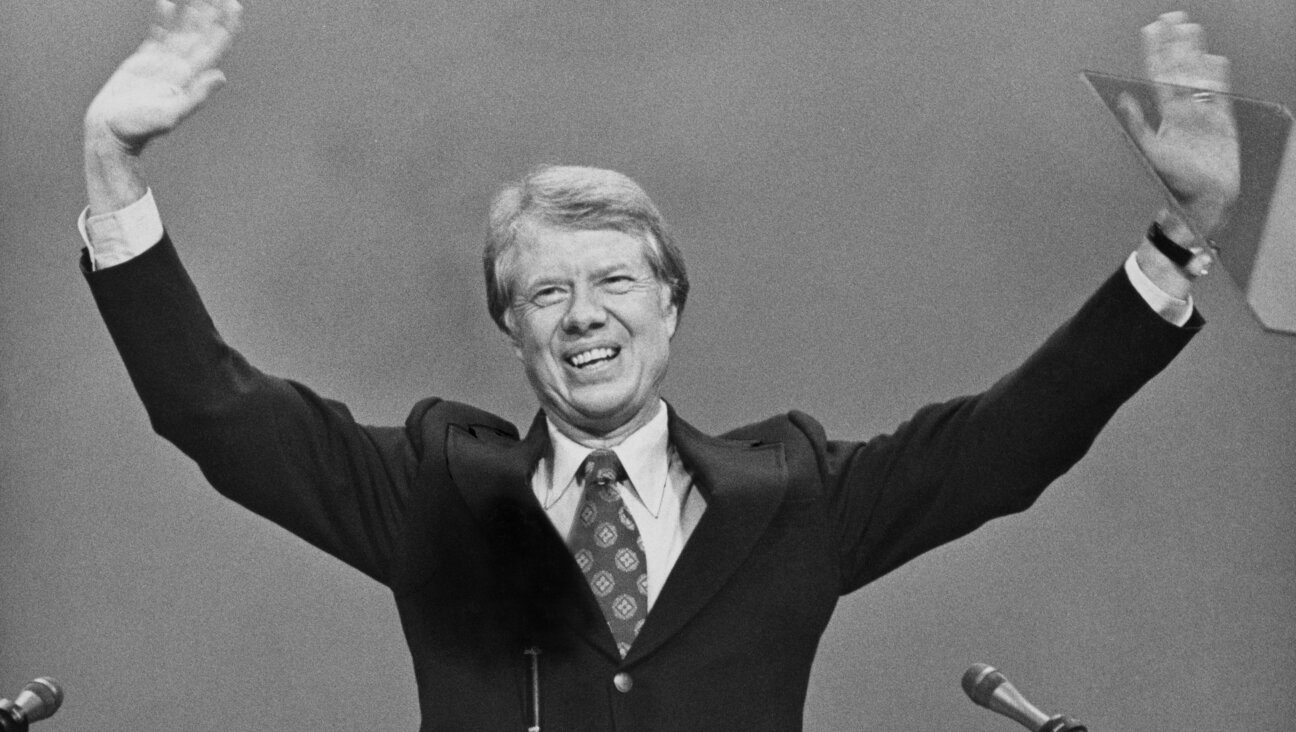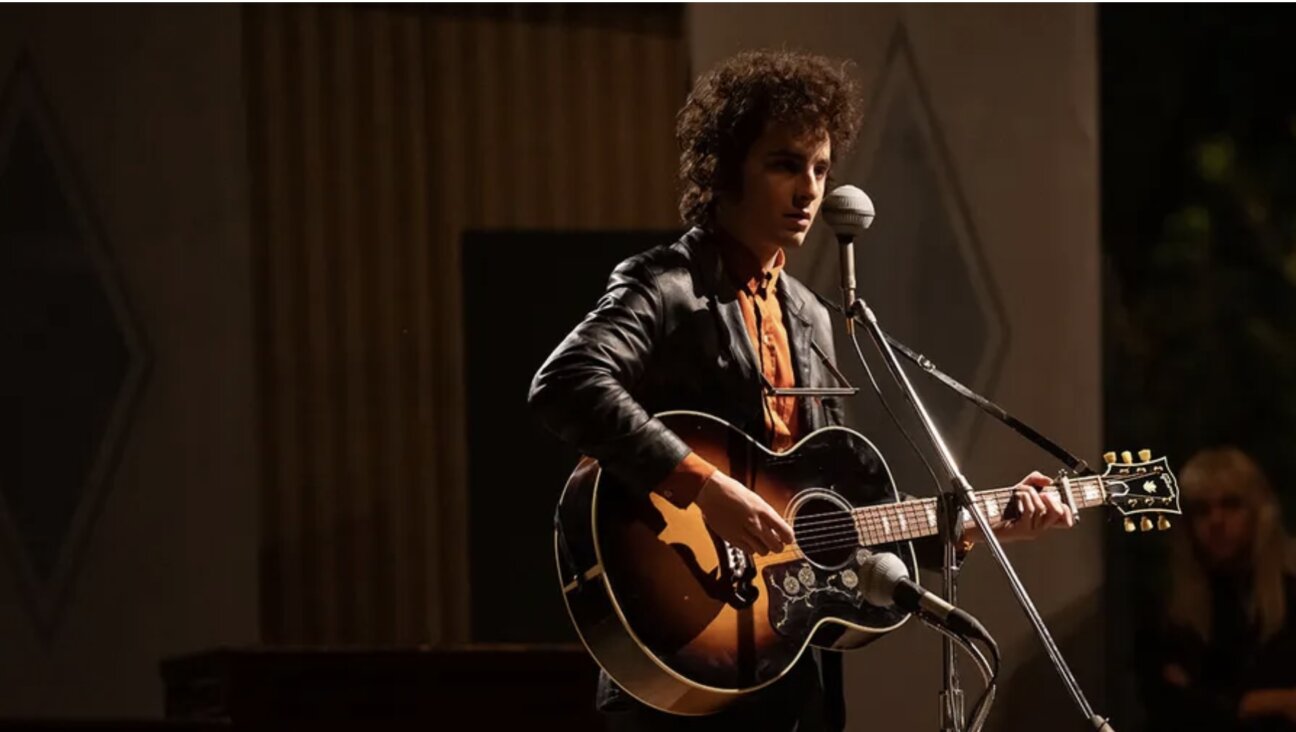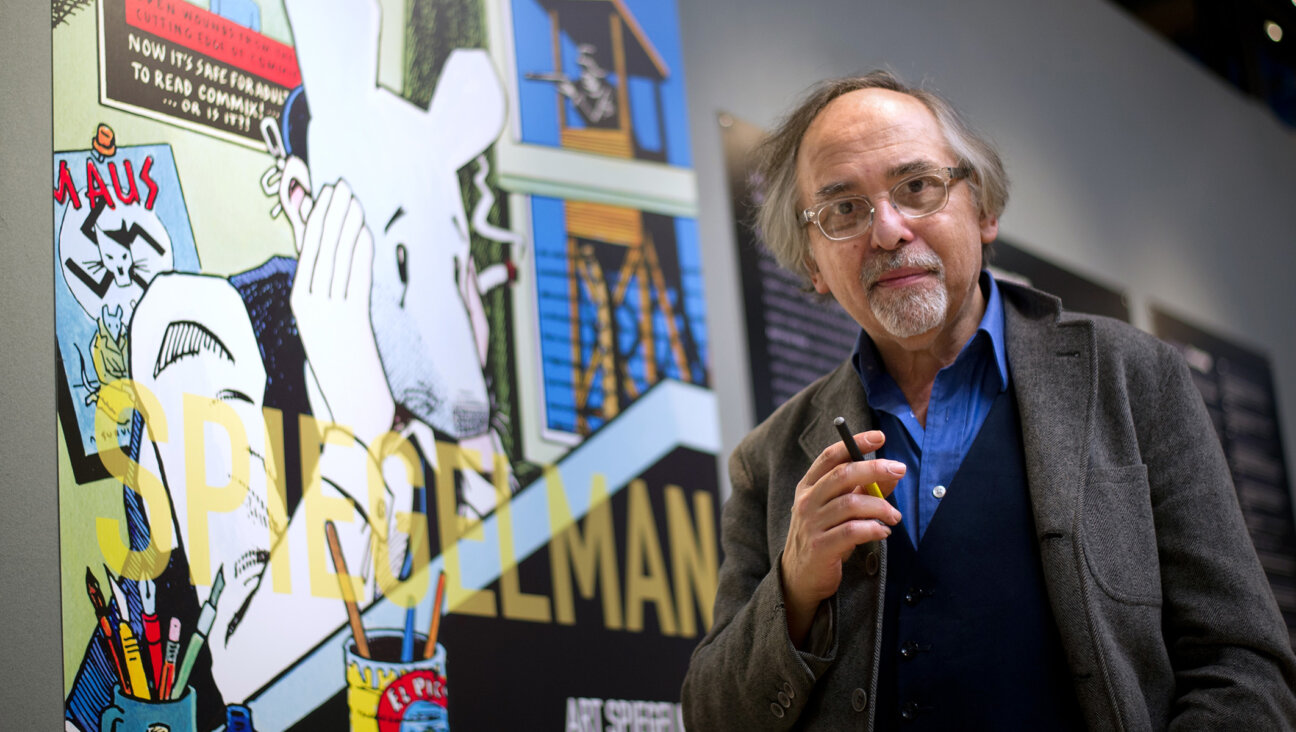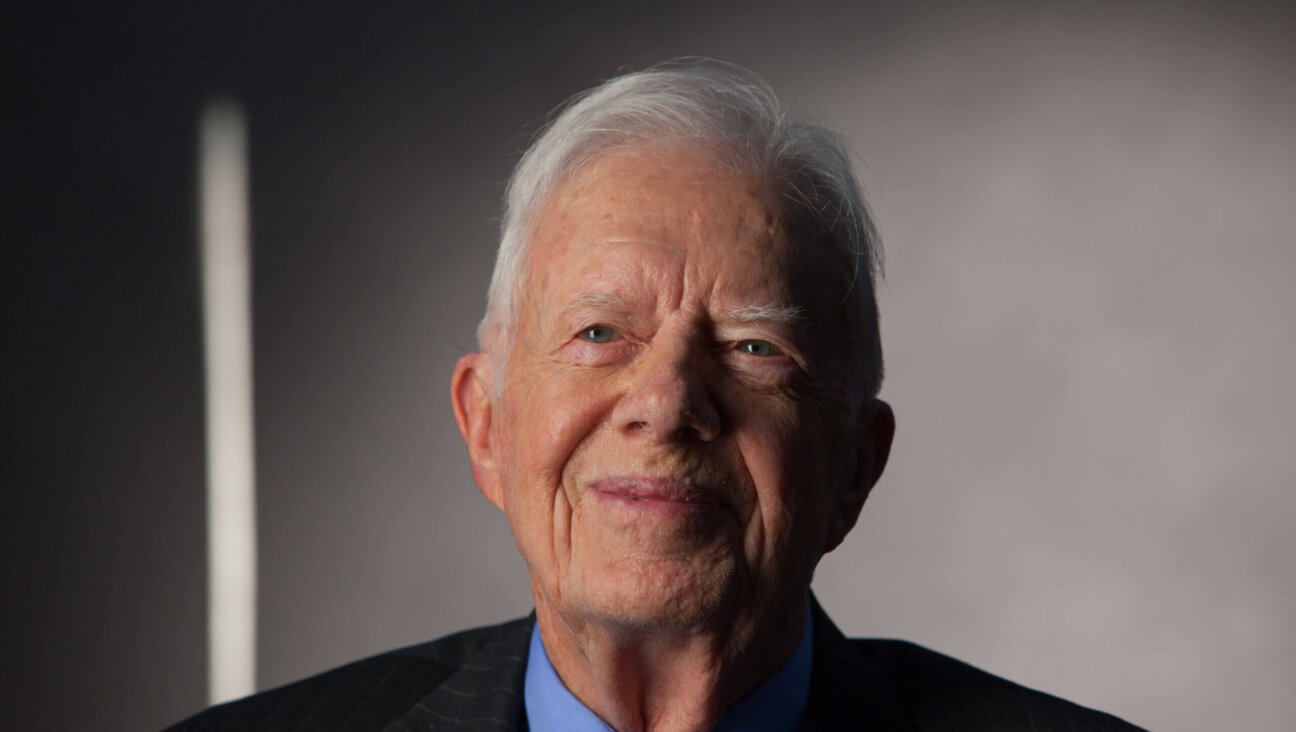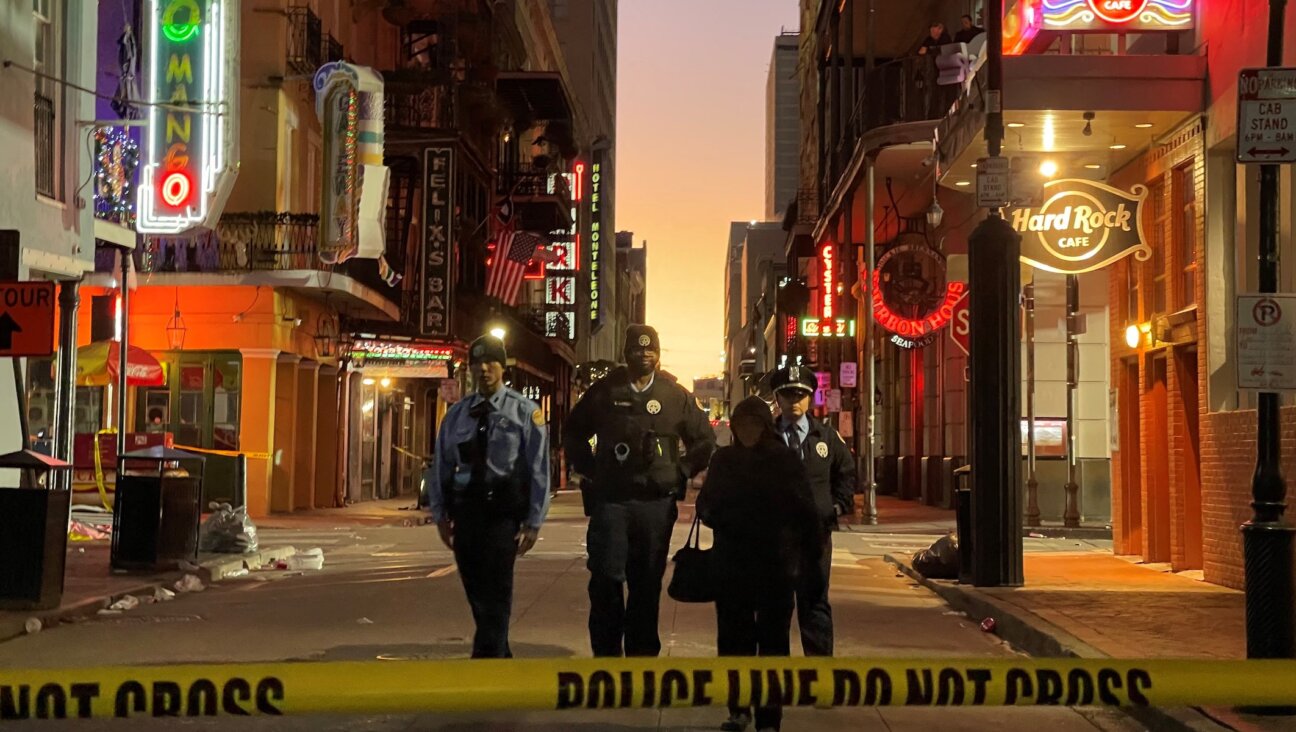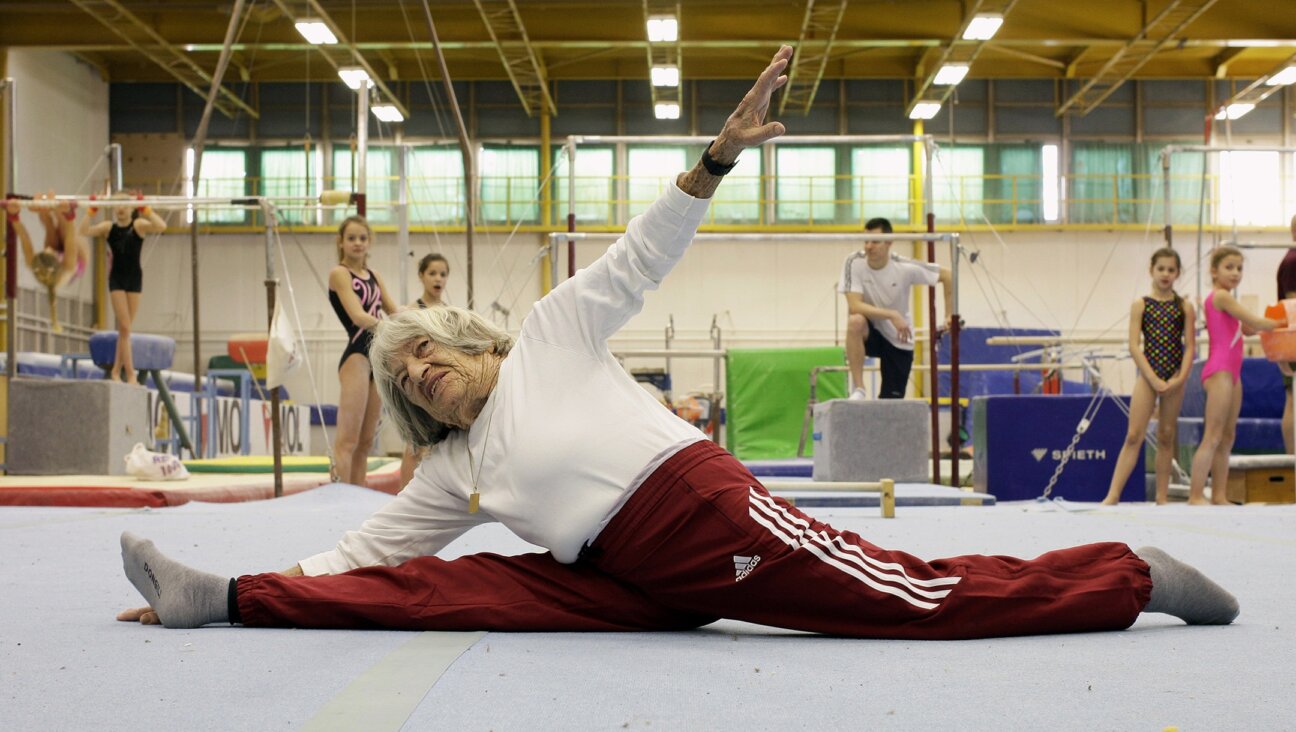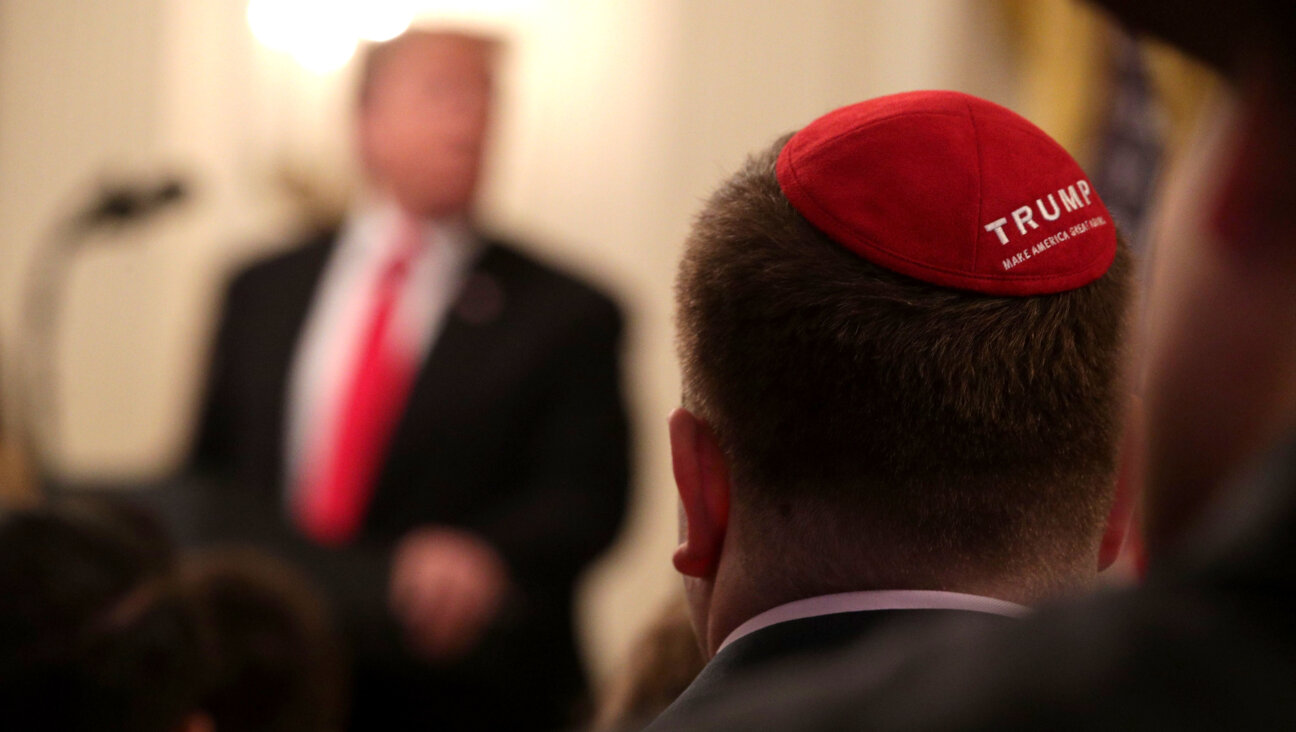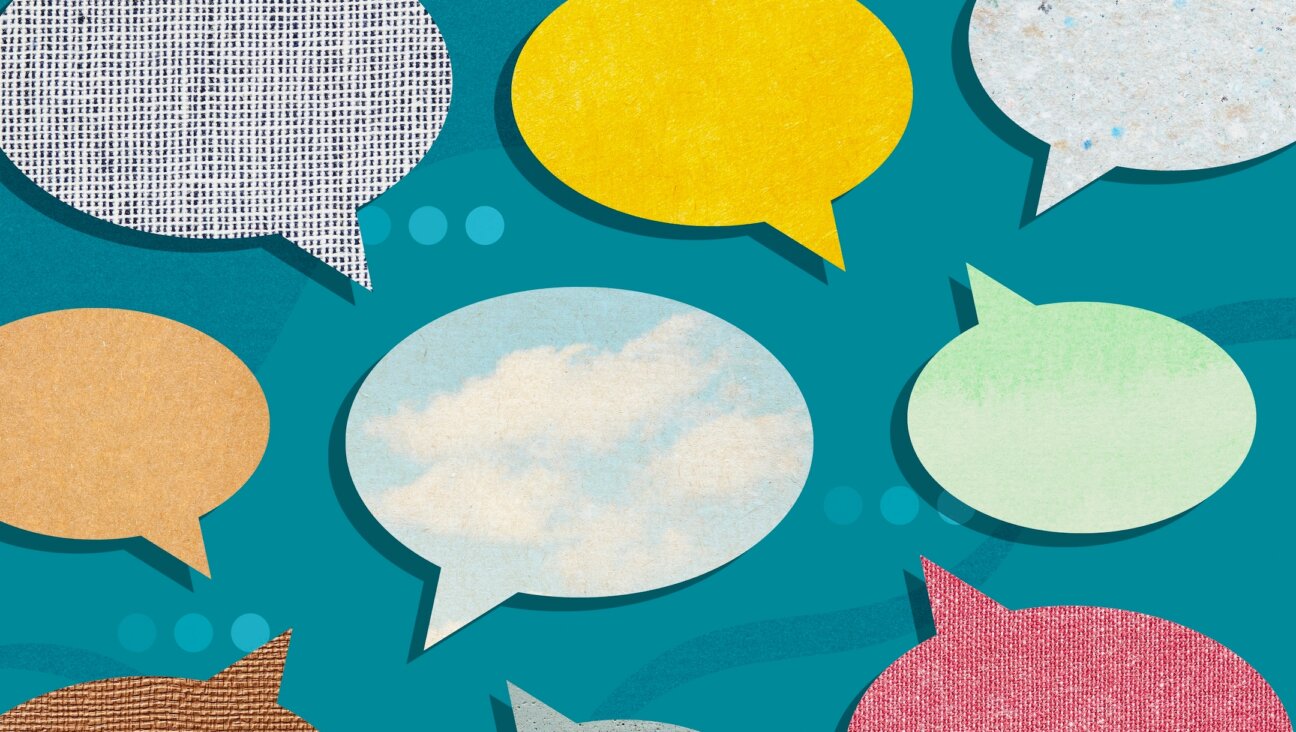Mega-Menorah Marks Milestone for Dutch — Jews and Christians Alike

(JTA) — In a windswept parking lot near the North Sea shore, Klaas Zijlstra stands motionless as he admires his latest creation.
It’s the first time he is testing the 36-foot menorah he has spent weeks designing and building in the shape of a Star of David in his metal workshop in the northern tip of the Netherlands. Despite strong winds, the menorah holds, thanks in no small part to its 6-ton base.
This isn’t just any mega-menorah. For one thing, it may be the largest in all of Europe. For another, it’s the handiwork of a Protestant metal contractor, paid for by Christian Zionists and meant to be a sign of solidarity with the Jewish people.
Oh, and it’s kosher for use on Hanukkah, too.
“It’s exactly like the rabbi wanted,” Zijlstra said.
The rabbi is Binyomin Jacobs of Chabad, who helped Zijlstra and a group called Christians for Israel design the nine-branch candelabrum so it could be used for the eight-day holiday.
On Wednesday evening, Hanukkah’s first night, Jacobs intends to mount a crane and light the first candle in front of hundreds of Christians and Jews during a public ceremony in Nijkerk, not far from Amsterdam.
Though commonplace in the United States and even in Russia, public Hanukkah events are a recent and revolutionary development in the Netherlands. Here they signify the growing self-confidence and openness of a Jewish community whose near annihilation in the Holocaust left a deeply entrenched tendency to keep a low profile.
“Twenty years ago, this wouldn’t have been possible,” said Arjen Lont, the Christian Zionist businessman who donated $40,000 to build and transport the menorah. “It requires a lot of openness.”
Lont says the purpose of the giant menorah, which can be used either with electric bulbs or oil lamps, is to send a message.
“After unspeakable suffering, the horrors of the Holocaust and most recently the attacks on Israel, Jews may feel they are alone,” Lont told JTA. “This is our way of saying you are not alone, we are behind you.”
The first public Hanukkah lighting ceremony in the country was organized in 1989 in Buitenveldert, near Amsterdam, by the wife of a Chabad rabbi, according to Bart Wallet, a historian of Dutch Jewry at the University of Amsterdam.
Today, such events are held annually in 19 municipalities, from the northern city of Leeuwarden, near Berlikum, to the southern border city of Maastricht, according to Jacobs.
Jacobs says public menorah lightings in the country signify the Jewish community’s confidence in asserting its place in Dutch society.
“Nowadays it’s also saying we are here, we are also a part of the fabric of religious communities and society,” he said.
Dutch Jewish reticence toward public displays of faith dates back at least to the 19th century, according to Wallet, when Dutch rabbis decreed that no Jewish rituals should be held in the public domain. At the time, Dutch Jews were keen on integrating into a democratic society as equal citizens, and they considered it counterproductive to showcase religious customs that set them apart from their compatriots.
The tendency was greatly reinforced after the Holocaust, when three-quarters of Holland’s population of 140,000 Jews perished — a higher percentage than anywhere else in occupied Western Europe. Today, about 40,000 Jews live in the Netherlands.
Wallet says things began to change in the 1970s, when Dutch Jews began displaying greater activism around anti-Semitism and Israel.
Even today, however, many Dutch Jews retain a sense of reticence when it comes to public displays of religion.
“There’s nothing wrong with these Hanukkah events, but to me they don’t seem familiar,” said Jaap Hartog, chairman of the umbrella group of Dutch Jewry, called the Dutch Israelite Religious Community, or NIK. “To me, Hanukkah is more a holiday that you celebrate at home with your family. The public candle lightings are more of an American thing.
“On a personal level, I’m not too keen on participating.”
Initially, Chabad rabbis organized candle-lighting ceremonies as part of their efforts to reach lapsed Jews, but today the menorah lightings are not organized exclusively by Chabad. Nathan Bouscher, a Jewish activist who is not himself religious, has co-organized candle lightings at the Dam, Amsterdam’s best-known square.
“It’s a way to build bridges between Jews and the non-Jewish environment, but also within the community and between Dutch-born Jews and the thousands of Israelis who live here and the tourists from Israel,” Bouscher said.
Back at Zijlstra’s metal workshop, his menorah is attracting attention from neighbors. During the test run last week, a few of them stopped by to admire his handiwork and congratulate him.
One elderly man, Henk van Jaarsveld, looked up at the menorah with tears in his eyes. A self-described Messianic Jew, he showed off his Hebrew skills by reading the holiday greeting in Dutch and Hebrew that Christians for Israel had attached to the menorah’s base.
Next year, Christians for Israel says it wants to place the menorah in front of the European Parliament in Brussels to protest legislative proposals that seek to restrict Jewish rights such as circumcising male infants.
“On Hanukkah, the Jewish people remember their rebellion against the Greeks because the Greeks limited the Jews’ freedom of worship,” said Roger van Oordt, director of Christians for Israel’s Dutch branch. “We want to place this menorah there as a warning against repeating that history.”
A message from our Publisher & CEO Rachel Fishman Feddersen

I hope you appreciated this article. Before you go, I’d like to ask you to please support the Forward’s award-winning, nonprofit journalism so that we can be prepared for whatever news 2025 brings.
At a time when other newsrooms are closing or cutting back, the Forward has removed its paywall and invested additional resources to report on the ground from Israel and around the U.S. on the impact of the war, rising antisemitism and polarized discourse.
Readers like you make it all possible. Support our work by becoming a Forward Member and connect with our journalism and your community.
— Rachel Fishman Feddersen, Publisher and CEO











